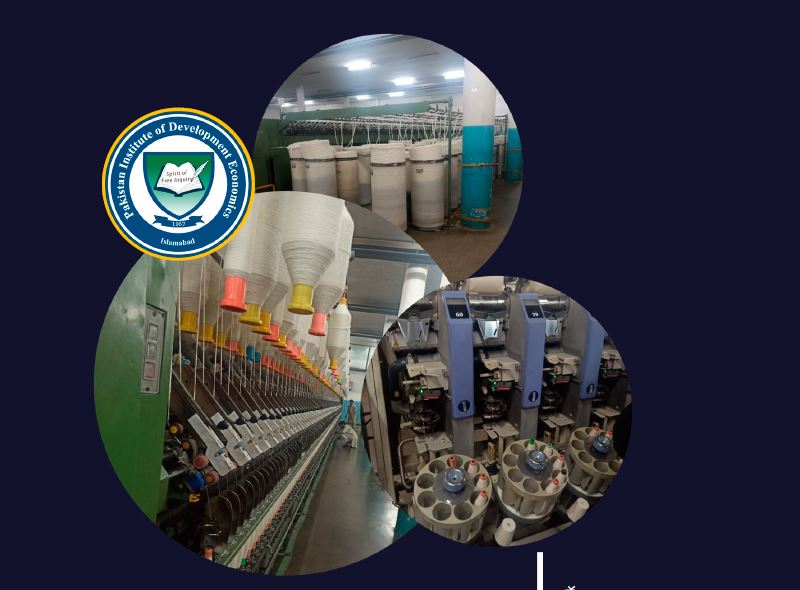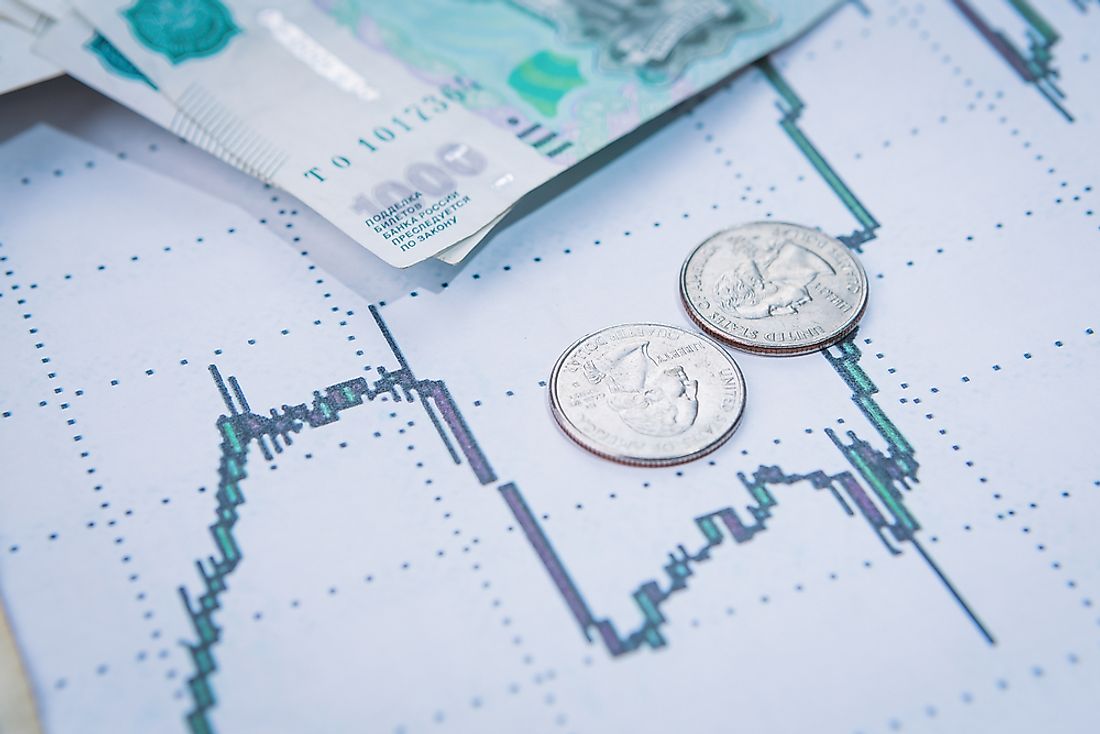The Electricity Landscape in Pakistan: An Overview
Pakistan has historically suffered from some of the highest electricity tariffs in South Asia. These tariffs have not only served as a means to transfer the costs of inefficiency to consumers and industries without considering affordability, but have also given way to premature deindustrialization. Meanwhile, the current stock of circular debt hovers around Rs2.5 trillion ($14 billion) – an alarming figure which has gradually built up as a result of the poor planning that has characterized Pakistan’s energy sector over the years.

An efficient and reliable energy environment is critical for industrial competitiveness and is the only way to reverse the beginning of Pakistan’s premature deindustrialization. In order for the economy to emerge stronger out of its current industrialization phase, energy policies must reflect thorough planning for sustainability and effective resource management, along with a formula to reduce the trade deficit and limit borrowing in order to tackle the ballooning circular debt. Pakistan’s economy is heavily reliant on the exporting sector, and as long as the energy sector is not overhauled to remove inefficiencies, the economy cannot thrive. This is because the costs of inefficiency ultimately fall upon the business/ industrial sector, and inefficiencies cannot be exported if exports are to remain competitive.
Unfortunately, this reasoning continues to fall on deaf ears, as the National Electricity Plan (NEP) 2022-2026 presents a policy framework influenced by political economy of the power sector rather than economic rationale, and appears to be the latest in frequent energy sector initiatives that are rarely seen to completion. Issues of unreliable supply, poor service, and weak infrastructure have not been tackled effectively, leaving Pakistan’s energy sector trapped in a “bad equilibrium.” The role and scope of the regulator NEPRA is being severely curtailed and compromised through the compilation of this NEP without adequate stakeholder input as NEPRA would be obliged to follow the diktats of the plan in letter and spirit without any application of their mandated principles.
Over the course of about fourteen years, the country has shifted from excess demand to excess supply. Pakistan is scheduled to have as much as 50% abundant electricity supply by 2023 according to the Ministry of Energy, while there are no substantive plans in place to increase demand. Meanwhile, Pakistan continues to invest heavily in imported coal and RLNG even though developed nations and most of the developing world has long since made the shift to renewable energy. In 2019-2020, Pakistan’s LNG import bill stood at USD 2,559 million.
Within the above context, the NEP 2022-2026 comes as an utter disappointment, as it continues to perpetuate the ills that have characterized the energy sector since time immemorial, rather than developing an economically sustainable energy market regime. It outlines three comprehensive policy goals for the power sector: access to reasonably priced energy, energy security and sustainability. However, the plan fails to place the energy framework in the larger context of industrialization and economic growth, and is therefore riddled with countless fallacies. It appears to serve as a means of clearing up the backlog of legal and illegal expenses by placing all costs of inefficiency on consumers. This paper presents an in-depth critique of each section of the NEP.
Demand Creation Measures
For starters, it is expected that the circular debt will soon hit a daunting 8 percent of country’s GDP (currently 3 percent – total circular debt has stretched to Rs 2.476 trillion through the first six months of the present fiscal year) due to capacity payments. Consequently, the swelling cost of surplus power has resulted in ever-increasing consumer power tariffs. This scenario necessitates an intervention in the form of demand creation, which the new NEP fails to address. Pakistan has a surplus of 10,000 megawatts (MW) of electricity during peak demand season i.e. summer, which increases two-fold in the winter as the electricity demand eases (Ministry of Energy). Rising power tariffs will destroy the competitiveness of industrial sector, which requires a predictable and competitive tariff to sustain growth, so it is critical to include demand creation measures for the NEP to be effective.
In addition, the NEP does not examine the impact of the country’s current revenue-based load shedding, another factor which impedes demand creation and punishes concumers. Furthermore, the winter months come with an increased demand for gas supply, while the country has faced an acute gas shortage for several years. The increased heating requirements and low gas supply necessitate alternatives such as electrification of heating appliances.
National Electric Vehicle Policy (NEVP)
Pakistan’s government approved an ambitious national electric vehicle policy in November 2021. The policy seeks to capture 30% of all passenger vehicle and heavy-duty truck sales by 2030, and 90% by 2040.
Infrastructure, ministerial coordination, and a steady electricity supply are all important aspects of this policy. As Pakistan’s energy sector is highly unstable, with frequent dim-outs and breakdowns, ambitious goals such as the NEVP require sustained policy support and a stable grid – both of which are lacking in Pakistan.
Pakistan’s ambitious NEVP is to act as a catalyst to steer Pakistan into an electric automotive future. However, it fails to devise any strategic business-oriented models for pursuing NEVP.
Competitive Trading Bilateral Contract Market (CTBCM)
It is important to note that any new initiatives, such as CTBCM, would certainly entail high costs, both economic and ideological, that outweigh potential benefits. There are a number of structural issues underscoring the power sector in Pakistan, so initiatives such as CTBCM that idealize competition are not grounded in reality. CTBCM has severe limitations, as the generation side is already completely tied up in long-term generation contracts, rendering distribution competition an irrelevant exercise, due to a complete lack of free suppliers in the foreseeable future. Furthermore, a costly generation mix is likely to arise, as wholesale prices will not decline sufficiently despite apparent competition. In contrast, a stable, fair and transparent policy regime would do well to attract the desired investment in generation.
Free market development is the only way forward in order to guarantee competitive tariffs, and thereby competitive exports. However, without a workable wheeling policy, a free market cannot develop. The national electricity policy runs contrary to the CTBCM, and also mandates open access charges, leaving little room for competitive suppliers to offer low-cost electricity tariffs. It appears the role of the regulator has been nullified, as the regulator is normally in the position to make decisions such as whether wheeling should be allowed for market development. It has been made clear that wheeling has been beyond the scope of NEPRA, as they were evidently unable to implement it, so it is hard to imagine how they will undertake CTBCM.
Additionally, similar charges including cross-subsidization and stranded costs are being proposed as standby charges for mills primarily being run on captive power and having grid connections on standby.
Firstly, standby charges should be based on an actuarial assessment of the quantum of electricity likely to be drawn on at any point in time. These fixed charges cannot and should not be based on the full connected load, as at any point in time only a small proportion would actually be drawn by the mills – at most 10 to 20%. Secondly, such charges should exclude irrational and inefficiency-based costs as well as imprudently incurred capital costs.
Cross-Tariff Subsidization and Fixed Costs
Despite the fact that cross subsidies have been condemned by numerous scholars (Moerenhout et al., 2019) on account of their irrationality, they are being continued and even enhanced according to the new NEP. The primary reason for the continuation of this policy is that the actual costs of individual electricity users is difficult to measure and consequently households reap benefits from the decreased electricity price in lieu of the policy (Chen et al., 2018). However, this is ultimately a social obligation of the government that they are allowing to fall onto consumers. Furthermore, who can reasonably decide which consumers pay the price, especially when the government should be covering these costs of its own accord.
Although the government may have developed this policy to improve social stability, the reality is that only the most privileged are in a position to reap the benefits. Most of the subsidies are enjoyed by families with better economic conditions under the pretext of their greater willingness to consume electricity (Li et al., 2018). Cross subsidies in electricity prices are meant to shield vulnerable groups, but the wealthiest consumers end up benefitting due to their hefty electricity consumption which ultimately makes it hard to relate fairness to cross subsidies. Therefore, the economic costs of such policies swell. NEP fails to address this dynamic.
Furthermore, cross-subsidization and fixed costs for entry into the open market contradict the spirit of the CTBCM and will derail Bulk Power Consumers (BPC’s) interest in shifting due to the high open access charge. Consumers will either shift to captive power or relocate their manufacturing units to low-cost countries, leaving bilateral markets barren, resulting in lower industrial output, fewer exports, and weaker economic development. Cross-tariff subsidization violates all utility operating standards. The consumer end tariff should be based only on the cost of service to a specific category of consumers. The government’s socioeconomic or political commitments should not be allowed to infiltrate the regulated energy industry.
Capacity Payments
The recovery of capacity payments is only possible through measures to increase consumption while reducing price significantly. Current capacity payments of roughly Rs. 900 billion (which are expected to increase to Rs 1.5 trillion in 2023) can only be met if a substantially wider base load consumption of power is established. This can only happen if tariffs are reduced substantially to stimulate broad-based utilization, enough to cover energy costs and contribute to fixed costs at much lower rates with far higher utilization. The tariff of electricity should be lower at higher usage rates and at the margin it should be equal if not less than domestic gas price. Thus the power sector sustainability can only be assured if domestic gas pricing is revised to be at par with electricity pricing.
Efficient and Liquid Market
One of the key components required of the power sector in order to be sustainable and competitive is efficient and liquid markets, which the NEP does not appear to recognize.
Apart from a lack of funding necessary to make the energy sector liquid, the data management system is poor. In fact, there is no accurate database of consumers at present. The power division must work to develop and update its database on priority basis for correct analysis and prognosis.
Furthermore, security deposits should be redefined in accordance with consumption patterns allowed by NEPRA, which will allow the recovery of almost 100 to 150 million USD.
To fast-track the establishment of a market, all PPAs of existing IPPs should be renegotiated to guarantee purchase of only 50% of capacity, to be traded or sold directly on B2B basis through wheeling and or through a power exchange. All road blocks and additional charges on wheeling are to be rejected so that B2B power business and market development is promoted and can be competitive.
Moreover, a mechanism to simplify the transition process of existing IPPs should be developed and deployed as soon as possible to serve as a proof of concept for the take and pay regime and ultimate switch to the CTBCM. A process should be put in place to remove the least needed IPPs from current PPAs through discounted buyouts, etc. This crucial feature is ignored in the NEP.
Competitiveness
The competitiveness of the sector has to be driven by consumers, enabling them to make choices about the way they source and ultimately use energy. It is suggested that an adequate and reliable source for achieving competitiveness in the electricity sector be introduced into the NEP, and that the bid process be avoided as it is inadequate to handle all of the complexities of market design. While considering distribution or retail tariffs, NEPRA should not consider costs whereby some generation plants are mounted on take-or-pay guarantees at the expense of competitively acquired capacity. Such costs cannot be classified as prudently incurred.
Technological Revolution
Globally the power industry is experiencing a huge technological revolution across its entire value chain. In Pakistan, it has been nearly 15 years since loans were being taken to import smart meters, but no progress has been seen on this front till date.
If Pakistan hopes to keep pace with the global technological revolution in energy, the following must be taken into account:
- A timeline should be provided concerning exploration and deployment of other innovative technologies in the power sector, i.e., battery storage, etc.
- An upgrade of the power system load dispatch & control and management at the national and regional levels is required.
- It should be made obligatory for all consumers over 5KW connection to procure their own prepaid smart meters which must be prequalified by DISCOS but on sale through private sector in order to assure no cost or procurement by DISCOs.
- The GoP should set targets for greenhouse gas emissions so that environmental responsibility does not come at the expense of financial sustainability.
Grid Reliability
A major obstacle that has pushed industries away from the national grid and toward captive units is the lack of grid reliability, with a non-standard supply to the industrial sector that has resulted in huge losses. Furthermore, unwarranted interruptions in supply are endemic, along with constant, inordinate breakdowns, fluctuating voltage and flicker which result in huge financial and performance losses, and consequently lower production. Issues of shutdowns, breakdowns and tripping may be mitigated through up-to-date maintenance etc., but the issue of non-standard supply requires concerted technical efforts that can only be made at the DISCOs level.
Management contracting of DISCOs should be prioritized in order to enhance efficiency, improve demand predictions, and limit line losses. Productivity in power generation and distribution can only be achieved through management contracting.
The implementation of advanced technology has been opposed by the management and workers of the sector who are resistant to change; this is unfortunate as new technologies would solve several glitches. This issue can also be addressed by introducing contract management in the sector.
Merger of Authorities
The government has decided to merge NEPRA, OGRA and NEECA to form a unified regulator to ensure integrated oversight of the country’s energy sector. The Merger of the regulators with expanded and more precise responsibilities is an important reform for the electricity sector. However, such a merger is meaningless if the prime regulator is not doing its job effectively. There should be no opportunity for arbitrage. Similarly, the coordination between all such authorities should also be made fool proof for an efficient collaboration.
This new merger is reminiscent of that between the Ministry of Energy, the petroleum and power divisions, and it is hoped that with a proper overhaul and thorough consideration of the recommendations in this paper, there may be positive outcomes from this merger. It is far more efficient to keep the number of ministries limited to reduce the deeply bureaucratic system in Pakistan, where ministries tend to serve as ‘post offices’ rather than following the model of a modern economy.
An alternative solution to this is strictly applying the criteria for selection of members and revoking amendments allowing bureaucratic capture. This can be further solved by increase in the number of members of NEPRA to 9 by appointing 4 professional members apart from the provincial members.
Stock Market
In order to systemize and professionalize the working of DISCOs while reducing political interference, the mandatory listing of all DISCOs and public sector energy SOE’s on the stock market should be enforced. This will ensure operational and disclosure standards in line with good corporate governance.
Conclusion
The NEP appears to be based on a single premise: do everything possible to save the sinking power sector, even if it means penalizing customers rather than working to enhance the sector’s efficiency. A policy is as much a declaration of intention as it is a prospective opportunity for effective and flexible planning. Therefore, it is hoped that the NEP is malleable enough to take into consideration our suggestions, and refrain from placing the costs of inefficiency on consumers and sectors that should be supported as they help the economy to grow.
The only path to sovereignty and economic growth for Pakistan is through large scale improvements in the energy sector. It is high time those in power view the scenario from this perspective and reassess the broad consequences of the policies they propose.




















